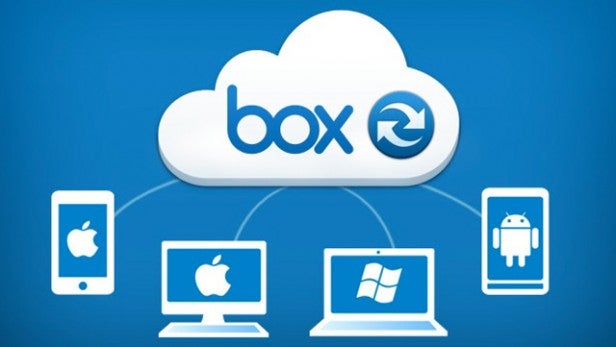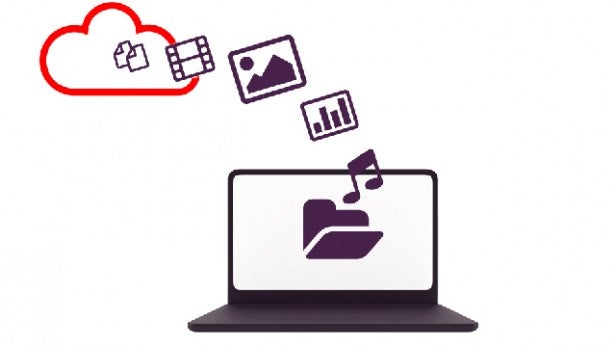What’s the best cloud storage service to use?

We compare Google Drive, Dropbox, OneDrive, iCloud Drive and the cloud storage newcomers
We’ve been told for several years now that the future of computing lies in the cloud. That future is now here, with a number of highly accomplished cloud storage services currently competing for our data – and our money.
Google Drive, Dropbox, Microsoft OneDrive and Apple’s iCloud Drive are all looking to be your cloud service of choice, but which is best? Let’s take a closer look at each of these four offerings.
Google Drive

Google has combined a number of its online services under the Google Drive banner, creating a single formidable and flexible productivity tool with numerous abilities. It’s also one of the cheapest cloud storage solutions of the lot.
How much storage do you get?
You get up to 15GB of storage for free, which is the equal best base amount of the four. You can then rent 100GB of additional storage for $1.99 (around £1.17) per month, or an extra 1TB for $9.99 per month (roughly £5.90). That’s pretty good value, but note that Google charges you in dollars, and some banks will charge for such a “foreign” transaction.
You’ll also be able to bag lots of free storage through partner deals. Many Chromebooks give you some added GB, while we were gifted 100GB for opening up Google Drive on the One M9.
What are the key features?
Google has pulled its Docs, Sheets, and Slides services into Google Drive, allowing you to share and collaborate on documents, spreadsheets and presentations seamlessly from within Drive. What’s more, none of these documents will take up any of your allowance.
Gmail allows you to quickly attach documents from Google Drive, while it’s also possible to set attachments to automatically save to the cloud. Some larger files need to be uploaded to your Drive before you can send them.
Google has also integrated its Google photo sharing facilities into Drive, which allows you to automatically upload your phone snaps to Drive. Here Google automatically enhances them with its “Auto-awesome” tool. What’s more, if they’re less than 2048 x 2048 in size, your uploaded photos won’t count against your allowance.
All told, Google Drive offers a very comprehensive set of tools to use. If you’re familiar and comfortable with using Google services, it’s hard to argue against using it.
How good are the apps?
Google has Drive apps for Android, iOS, Mac and PC, and all have been well adapted to the host platform.
The smartphone apps are typically minimalistic and easy to navigate, though on iOS they subscribe to Google’s design language more than Apple’s. If you download the additional Sheets, Docs and Slides apps, you can also edit documents (including MS Office docs) from your phone or tablet.
Each of these apps has seen a recent Material Design infused update, with a flatter design and a load of of new visual elements. They’re all pretty fantastic – slick, quick and everything just works. Start a document on your iPad, pick it up on your Chromebook and even finish it on your Android phone while you’re on the bus – it’s seamless.
Meanwhile the desktop apps stay out of your way, simply adding a Google Drive folder to your PC or Mac’s file system that stores and syncs everything.
SEE ALSO: 5 big-money crowdfunding projects that failed
Dropbox

If there’s one brand name that can be said to be synonymous with cloud storage and sharing, it’s Dropbox. Established in 2008, it currently has more than 200 million users worldwide. Many of the features adopted by Google, Apple, and Microsoft in this field have been directly informed by Dropbox.
How much storage do you get?
Dropbox offers the least amount of initial free storage at 2GB, but this can be expanded to 16GB through referrals (getting others to sign up). Additional storage rental is relatively pricey, though. An additional 100GB will cost you £7.99 per month, 200GB is £15.99, and 500GB is £39.99 per month.
You can often get extra storage through other means, though. For example, some phones are sold with 50GB of extra storage for two years as a sweetener though this seems to be somewhat dying a bit, with many choosing to offer up Google Drive storage instead.
What are the key features?
Dropbox’s biggest feature is simply how well established and easy to use it is. The setup procedure is painless, regardless of platform, and there’s a good chance most of the people you deal with over the internet — whether clients or friends — have a Dropbox account already, making sharing that bit easier.
Like Google with Gmail, Dropbox now has its own email app in Mailbox. This too plays nicely with the company’s own cloud storage service, allowing you to attach Dropbox files to emails and, conversely, save such attachments to the cloud. It’s available on iOS and Android, plus the web and there’s even a very pretty native OS X app that is much better than Apple’s Mail Client.
Of course, Dropbox has the advantage here because Mailbox supports both Gmail and iCloud accounts, with others said to be on the way.
As with the other services, Dropbox encourages and facilitates automatic mobile photo uploads, although unlike Google Drive they count against your allowance regardless of size.
Dropbox has a dedicated photos app (available on iOS and Android) called Carousel. This pulls in all backed-up snaps and lays them out in a grid view, scrollable by day, month or year. It even has a ‘Timehop-esque’ ‘On This Day’ feature which pings your phone with a snap from your past. Ah, reminiscing over that awful haircut you once thought was cool.
Dropbox for Business is a popular choice with companies due to its proven reliability and security. It gives companies 1TB of storage for five or more users at £11 a month per user.
The only issue with Dropbox is it doesn’t have its own productivity apps. But, many apps do plug into Dropbox so you can easily pull down files to your favourite. Microsoft Word, for example, now plays nice with Dropbox – simply sign-in and all your documents will be accessible.
How good are the apps?
As mentioned, Dropbox’s biggest strength is its ubiquity. This extends to its apps, with versions for Android, iOS, BlackBerry, Mac, Windows 8.1, and Linux.
The mobile apps are extremely spartan and functional – particularly on iOS, where it subscribes to the iOS 8 design language. In both iOS and Android you get a list of stored folders in alphabetical order and additional tabs for photo uploads and ‘favourite’ files. The coolest addition to the iOS 8 app is support for TouchID, letting you ditch the password and use your thumb to add an extra layer of protection to your files.
On desktop platforms, you get Dropbox’s famous folder approach, allowing you to sync local files simply by dragging and dropping them.
You also get a handy little task bar icon that notifies you of recently edited shared folders, as well as offering shortcuts to your Dropbox files on the web.
Microsoft OneDrive

Microsoft’s cloud storage service had a bit of a stuttering start to life, with various chops and changes along the way — not least to its name. Remember SkyDrive? Now, though, the company has settled on a pure vision of OneDrive as its one core cross-platform cloud storage service.
How much storage do you get?
Microsoft has recently bumped up its free storage allowance to 15GB, bringing it level with Google Drive. You can add an extra 3GB by switching on automatic camera uploads in the mobile app, and an additional 5GB by referring 10 friends, all of which makes it the most generous allowance at present.
If you still need extra, 100GB costs £1.99 per month, and 200GB costs £3.99 per month. They are both real bargains. Good on you, Microsoft.
What are the key features?
Perhaps OneDrive’s biggest stand-out feature is its support for Office Online, allowing you to not only store MS Office documents in the cloud, but edit them from your web browser too.
Of course, this is a response to Google Drive and its Google Docs features, but Microsoft’s implementation gives you native access to the most widely adopted document formats around. This will make it ideal for many businesses.
How good are the apps?
One of the big benefits for OneDrive is that it is one of the only cloud services on this list that has proper Windows Phone integration, Dropbox aside, so if that’s your mobile operating system of choice the available options are much narrower.
Of course, Microsoft has also made OneDrive apps available for PC, Mac, iOS, and Android. On the app coverage count, then, it’s up there just behind Dropbox.
Like Dropbox, the OneDrive iOS mobile app subscribes to the iOS 8 design language, making it very easy to negotiate. You can also, just like Drobox, add an extra bit of security by using TouchID. Its Android app is a slightly messier mixture of Microsoft and Google elements, but it works well enough.
iOS and Android users also have the option to use Microsoft’s Office for tablet and phones, which are fantastic, fully featured little apps. You need a full-on Office 365 sub to access all the features, but the majority of things we use on a daily basis are all free.
SEE ALSO: Samsung Galaxy S6 vs iPhone 6
iCloud Drive

Apple was been even slower than Microsoft in getting its act together when it came to the cloud. Launched in 2011, iCloud was the start of the company bucking its ideas up, and iCloud Drive completes the picture with a full cloud storage solution to match the others on this list. Finally.
Yeh, don’t get your hopes up guys. This service is better than the failure that was MobileMe, but it’s still bottom of the pile here.
How much storage do you get?
iCloud Drive will give you 5GB of storage for free, which is one of the lesser amounts on offer here. An extra 20GB of storage will cost 79 pence a month, while 200GB will cost £2.99 per month. 500GB packages will cost 6.99 per month and if you go for a mammoth 1TB, that’s going to cost you £14.99 a month.
Basically, you’ll be paying if you want anything that won’t get instantly filled up with a few photos and a couple of device back-ups.
What are the key features?
Apple’s revamped cloud storage offering adds a Dropbox-like drag and drop desktop files system to the existing service. It’s available on Windows too, but only through a browser.
Mac users also get all the current iCloud offerings. These include seamless iWorks file syncing, Keychain for secure password storage, and backup for your contacts, emails, calendars, notes, and more. iPhone and iPad users also get to wirelessly backup their devices, as well as auto-upload their photos.
All very good for Mac and iPhone users, then. A whole lot less useful for everyone else. But you weren’t expecting anything else from Apple, were you?
How good are the apps?
Unlike the rest of the offerings, there is no iCloud app as such. We feel this is a massive misstep from Apple. A couple of third party apps, Documents 5 by Readdle for example, mimic the functionality of a native client, but it’s far from a perfect solution.
iCloud works quietly in the background on iPhone to sync all of the above, while a simple control panel app allows you to tweak your settings on Mac and Windows.
Of course, while Apple has acknowledged that many iPhone users are also PC users with its Windows iCloud support, there has been no talk of an Android iCloud app or support for any other platform.
Like the other services, Apple allows web browser-based access to your iCloud files. This means web-based versions of its iWork apps, Pages, Numbers and Keynote. Moreover, the desktop versions of these apps are free on any new Mac and iOS device.
This gives Apple a similar ‘all-in-one’ solution to Google and Microsoft, though the web apps are still in ‘beta’ and this sometimes shows in slightly sluggish performance.
Photos is a big sell for iCloud Drive, and it’s finally available for all thanks to the latest Yosemite update. Take a snap on your iPhone and it’ll instantly appear on all other device linked to that iCloud account – be it a Mac, iPad or even your second iPhone.
Even if you make an edit on the fantastic Mac app, it’ll appear right away on your other devices. It really is seamless. If you’re a Windows user, you’ll notice the ‘Photos’ app on iCloud.com, so again you’re not completely left out.
SEE ALSO: Chromecast tips and tricks
Conclusion
Dropbox is arguably the most accessible and ubiquitous service of the lot, and has the strongest business presence too. If you’re using the cloud for sharing serious amounts of files to a wide variety of clients or colleagues, it’s probably your best bet.
It’s not cheap, though. In fact, Dropbox is the most expensive service here — as it needs to be as the only true cloud storage specialist. Its weakness is the lack of deep platform level integration, the lack of native productivity apps and the limited free and pricey additional storage.
If you want the best balance of copious free storage, low expansion prices, and useful additional features, Google Drive appears to be the best bet right now.
With its Google Docs integration making collaboration on documents a doddle, tight Gmail integration, and handy photo uploading and enhancement services, it will be the best all-round package for a great many users.
Of course, there’s a third criteria that brings the other two packages into play — platform choice. If you’re heavily invested in Windows and/or Windows Phone, or OS X and/or iOS, then OneDrive and iCloud Drive will automatically become a whole lot more appealing to you. In fact, their tight integration into the respective platforms will make them a default, almost non-negotiable choice for certain tasks.
All of which means that in the immediate future, we’re all likely to be signing up for and using at least two of the above services simultaneously.
It’s far from an ideal situation. But when these cloud storage solutions are this uniformly good, free, and similar in basic function, it’s something we should all be able to learn to live with pretty comfortably.

The Outsiders
The big-hitters above aren’t the only solutions out there, especially if you have more specific needs. Here are a few other services you might want to consider.
Box
The biggest service just sitting outside the top 4, Box is mainly designed for business users. It puts security at the forefront of things, so all your top secret files *shouldn’t* fall into the wrong hands. There’s plenty of collaboration features too, so your team can work on projects together. Multiple subscription options are available, ranging from the fairly limited Personal plan (this gives you 10GB of space, but you’ll only be able to upload files up to 250MB and it lacks many of the top security features) to the £11 per month business plan. This one gives you unlimited storage, with the 5GB per file upload limit, but it does need a minimum of three users.

Virgin Media Cloud
Not a Virgin customer? Move along, this isn’t the cloud service you’re looking for.
While there’s nothing specifically wrong with Virgin Media’s cloud attempt, we wouldn’t recommend it for anyone but the die hard Tivo addicts.
It works ok – you get 5GB (plus an extra 5GB for other family members) of storage, plus further options can be added (£3.99 gives you 50GB, while £26.99 gives you 500GB), with videos, pictures and music all available to upload. You can even check your photos and music from a Tivo box, which is a nice touch.
It’s lacking any collaborative features, the apps are a tad on the ugly sides and it all seems just a bit slow and clunky. With so many better options out there, we say avoid this one.
BT Cloud
Just like with Virgin Media’s Cloud, this isn’t of much use unless you’re a BT customer.
Working in a similar way to the above attempt from Virgin Media, BT Cloud is a pretty basic digital locker service that can be used to backup files on multiple device and share content quickly between others.
There are some fairly old-fashioned looking apps available for iOS, Android and Windows 8.1 and of course everything can be accessed through a browser. Your initial free amount of storage depends on your broadband package – Unlimited Broadband Extra and Unlimited BT Infinity 2 customers bag a nice 50GB free, while all others will have to make do with a meagre 5GB. This can be upped by 50GB for £3 per month or by 500GB for £9.
Again, unless you just want some basic cloud storage, we’d advise you don’t put all your eggs in BT’s basket. It’s just very limited.
The Wildcard
Flickr
Now, this isn’t for everyone. It’s not for file sharing, document calibration or anything like that, but we feel Flickr deserves a mention here. Especially if you have lots of photos you want backed-up and accessible everywhere.
The killer feature with Flickr is just how much free storage you – a whopping 1TB. That’s a lot of full resolution photos. It also has the sleekest mobile apps, a great array of editing options, a fast website and a dedicated Windows or Mac uploader that’ll take all the shots on your computer and send them up to the cloud.
It’s the best cloud photo storing solution out there, period.


